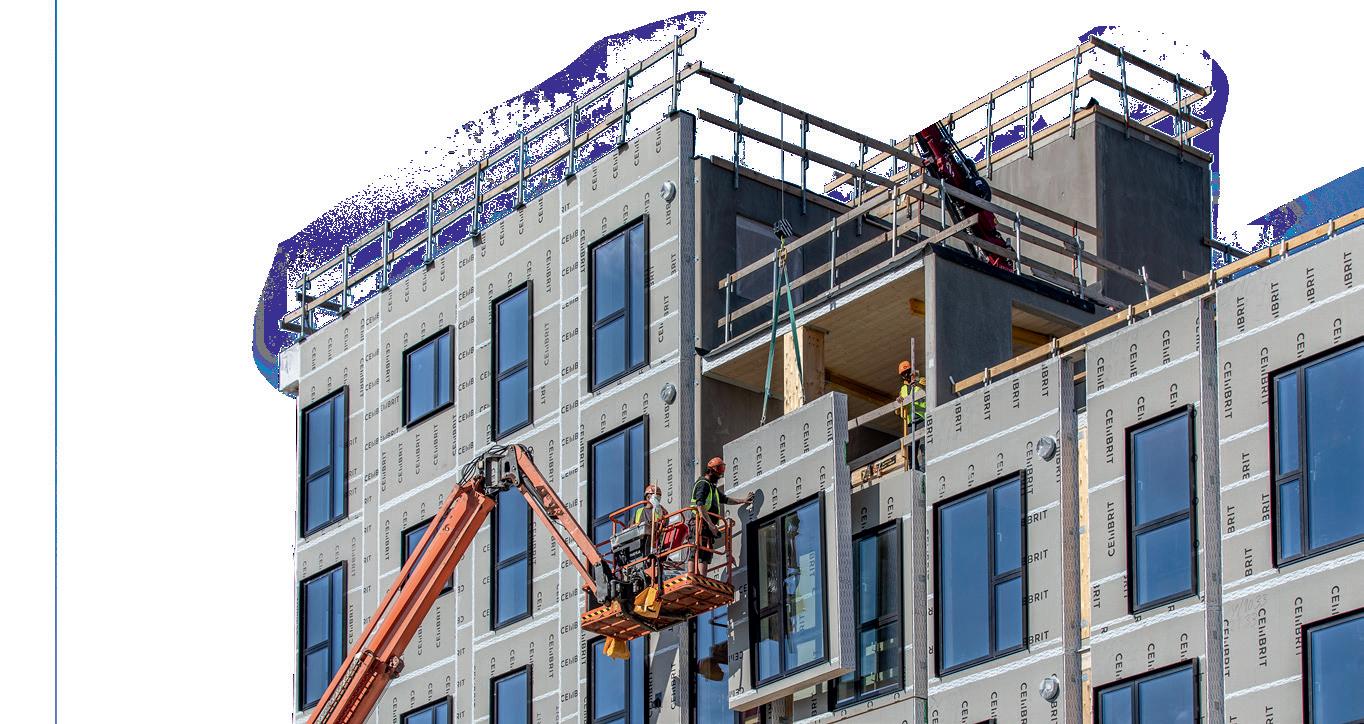
2 minute read
The art of circular thinking
The paradox of reused timber
In the office construction, reused timber is among the materials that will get a dominant role. This addresses another green advantage which unfortunately is invisible when following the specifications in the building regulations.
Advertisement
As a building material, timber has the huge advantage that trees absorb CO₂ from the atmosphere as they grow. It is therefore expected that the production phase will lead to a huge CO₂ decrease. On the other hand, in the regulations, it is assumed that the timber will just be burned and thus release CO₂ when the building’s days are numbered. The indisputable CO₂ savings connected to reuse of timber are therefore conspicuous by their absence and may be problematised in several ways, says Astrid :
The reused timber has CO₂ embedded which we now store even longer – something we will not be rewarded for. There is even a large amount of new timber in the building, and due to the contents of the building regulations, we must assume that everything will be engulfed in flames after the expected lifetime of the building. But with this building, we want to show just how large the potential is for reuse of timber. This illustrates very well the double-edged problem that may arise if the circular aspect is not included in the LCA calculations. There should be good incentives to use both new and reused timber.
Three test floors
The fact that the purpose with TRÆ is to explore ways to incorporate sustainability in buildings is also seen in that the building will have three floors that will each represent a specific type of material. The three categories are bio-based materials, pure recycling materials and upcycling where the recycled materials are processed for a new purpose. This is one of the reasons why the creative phase in the design process rests on a valuable interaction between sustainability specialists, fire safety consultants and the architects from Lendager.
In 2022, Technical Director for Fire Safety Helle Bugge gave a presentation about the building at the conference Build In Wood, where timber was the focal point. She vouches for the safety check of the reused materials :
I find it inspiring to work closely with people who are so dedicated to sustainability because as fire consultants, we change our perspectives when we are being challenged. When assessing so many different types of materials, we can also set a precedent for which materials to use in the future, says Helle and points out another aspect :
Safety is crucial in our field, but sometimes it is expressed a bit rigidly where CO₂ savings would have been possible. When projects like these are so focused on sustainability, we also spot various places where the material load is unnecessarily high. We trim where we can, but at the same time, we are inspired to enter into a dialogue with the government agency to be able to legally slim down future buildings in cases where it is completely safe.
Helle Bugge Technical Director Fire Safety – Certified for fire class 3 and 4 and third party Aarhus










